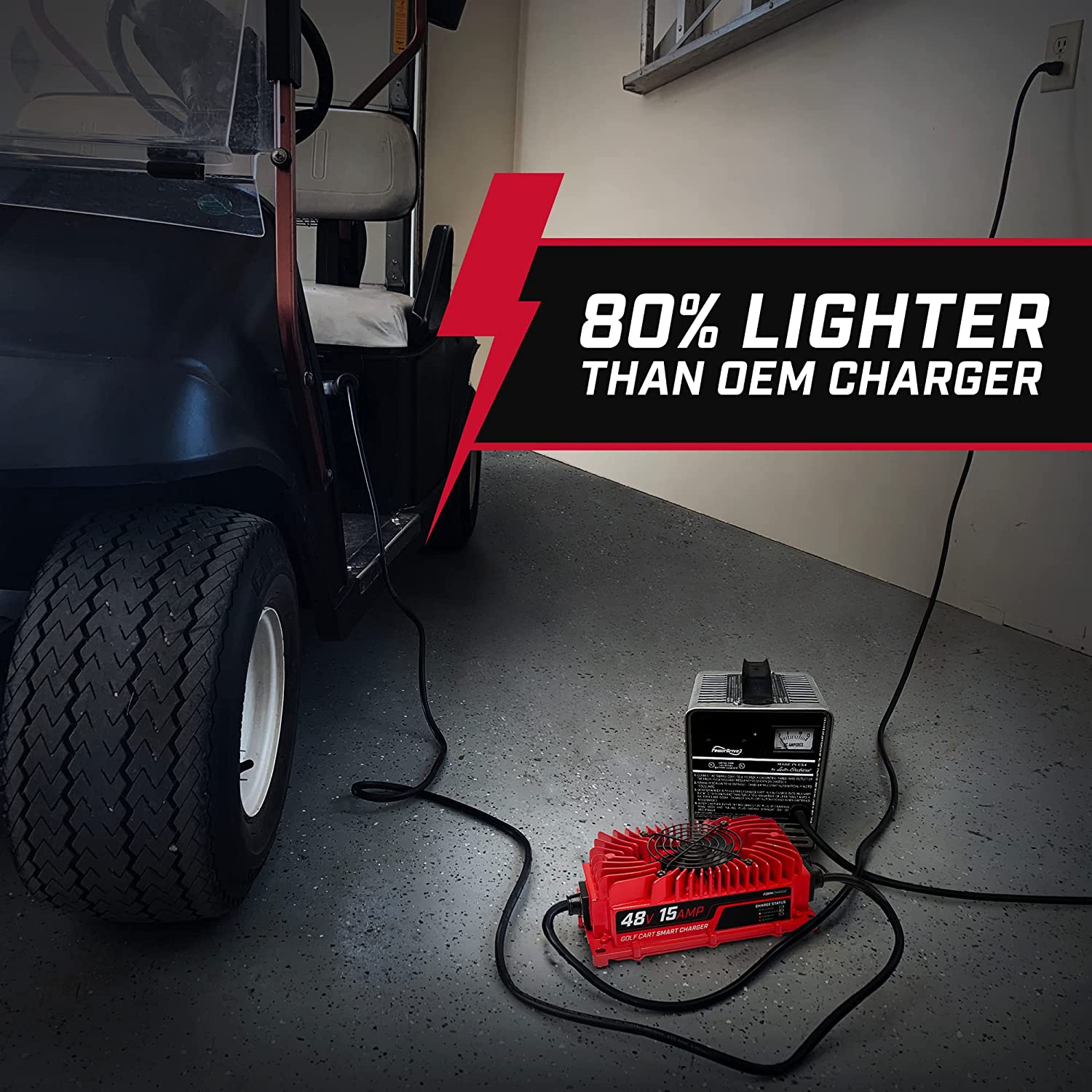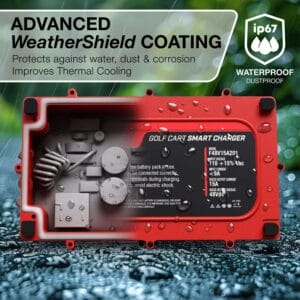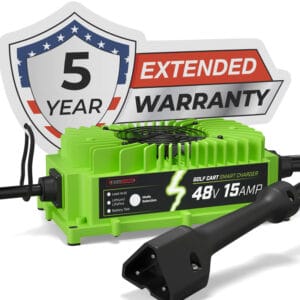1. Introduction
Golf carts are commonly used vehicles on golf courses and for recreational activities, relying on efficient battery power. Charging the battery is not only a necessary step to ensure the proper functioning of the golf cart but also an important part of maintaining battery performance and extending its lifespan.
2. Types of Golf Cart Batteries
Golf carts primarily use two types of batteries:
- Lead-Acid Batteries: These cost-effective and durable batteries require regular maintenance, such as checking electrolyte levels and cleaning terminals.
- Lithium Batteries: More expensive but offer better energy density, longer lifespan, and shorter charging times.
3. Preparation Before Charging
Before starting the charging process, ensure the following preparations are made:
- Safety First: Check for any damage to the battery and ensure the charger is functioning properly.
- Clean Battery Terminals: Use a cleaning solution to remove any corrosion, ensuring good electrical contact.
- Ensure Proper Ventilation: Charge the battery in a well-ventilated area to prevent gas buildup.
4. Charging Steps
Follow these detailed steps for charging:
- Connecting the Charger:
- Ensure the charger is turned off, and correctly connect the negative and positive terminals.
- Select the appropriate charging mode for the battery type (such as slow charge or fast charge).
- Charging Considerations:
- Monitor the voltage and current during charging to ensure they remain within safe limits.
- Safety Precautions: Wear protective gloves and goggles during the charging process to prevent accidents.
5. Post-Charging Maintenance
After charging, perform the following maintenance:
- Disconnecting the Battery: Disconnect the charger, removing the negative terminal first, followed by the positive terminal.
- Check Electrolyte Levels: For lead-acid batteries, regularly check the electrolyte levels and add water if necessary.
- Clean the Battery and Charger: Wipe down with a dry cloth to prevent corrosion.
6. Avoiding Common Mistakes
To prevent common issues, adhere to the following advice:
- Prevent Overcharging and Undercharging: Use a charger with an automatic shut-off feature to avoid battery damage.
- Do Not Use Incompatible Chargers: Ensure that the charger is compatible with the battery.
- Regularly Check Battery Health: Conduct voltage tests and visual inspections to identify any potential issues promptly.
7. Battery Usage and Storage Tips
Tips for extending battery life include:
- Proper Usage: Avoid frequent deep discharges, keeping the battery charge between 20%-80%.
- Seasonal Storage: Before winter storage, charge to 50% and store in a dry, cool place.
- Charging Cycle Recommendations: Charge at least once a month to keep the battery active.
8. Choosing a Charger
Selecting the right charger is crucial:
- Compatibility: Ensure the charger matches the battery type (lead-acid or lithium).
- Charging Speed: Choose an appropriate charging speed based on usage frequency; fast charging is suitable for frequently used carts.
9. Battery Troubleshooting
Tips for identifying battery issues:
- Battery Not Charging: Check if the charger and connections are functioning properly.
- Battery Swelling or Leaking: Stop using immediately and replace the battery.
- Decreased Battery Life: Regularly conduct voltage and capacity tests to determine if replacement is necessary.
10. Conclusion
Regular maintenance and proper charging can significantly extend the lifespan of golf cart batteries while ensuring optimal performance. By following these best practices, users can effectively manage battery usage and maintenance.


